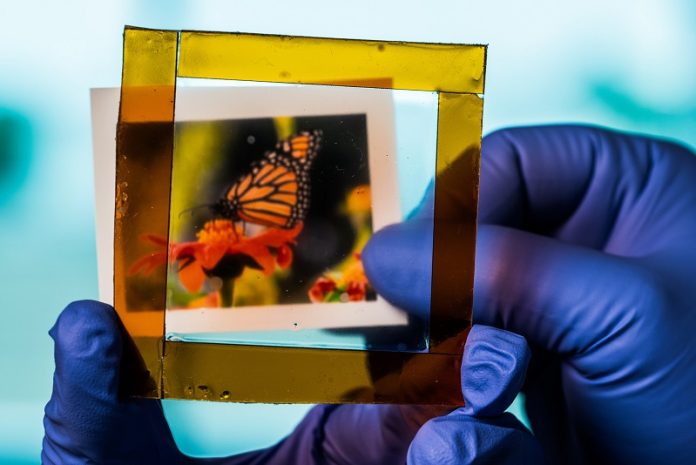
Scientists at Rice University have developed a new material that could revolutionize how we cool our indoor spaces.
This innovative material, known as a thermochromic polymer, changes its transparency based on the temperature, helping to keep buildings cool more efficiently.
The researchers’ findings were recently published in the journal Joule.
Cooling buildings is a major concern, especially as global temperatures rise and heat waves become more common.
Air conditioning is widely used to keep indoor spaces cool, but it consumes a lot of energy—7% of the world’s total energy use—and contributes to 3% of global carbon emissions. As the need for cooling becomes more urgent, finding better ways to control indoor temperatures has become a priority.
One promising approach involves coating windows with materials that block heat while still letting light in.
Thermochromic materials, which change transparency with temperature, are a great option for this. However, until now, they have been too expensive and not durable enough for widespread use.
The team at Rice University, led by Professor Pulickel Ajayan, has overcome these challenges. They developed a new thermochromic material that is not only more durable but also more responsive to temperature changes.
This means it can more effectively regulate the amount of heat entering a building through the windows.
“Imagine having windows that automatically become less transparent as the temperature rises, helping to keep your home or office cool without using extra energy,” said Sreehari Saju, a doctoral student at Rice and one of the lead authors of the study.
“Our material combines both organic and inorganic components, which helps it last longer and cost less than existing thermochromic materials.”
The researchers used a mix of two polymers and a type of salt to create this smart material. They carefully optimized the blend to ensure smooth transitions between clear and opaque states as temperatures change.
The result is a material that is not only effective at blocking heat but also incredibly durable, with an estimated lifespan of 60 years.
“Our approach was unique,” explained Anand Puthirath, a research scientist at Rice and another lead author. “We combined experimental methods with computer simulations to understand how the material would perform in different environments and building designs. This helped us create a material that is both practical and effective.”
The material’s durability and performance set new standards for thermochromic technologies, making it a strong candidate for large-scale use in buildings. The research was also supported by experts from the Chinese University of Hong Kong, who helped study the material’s thermochromic behavior.
“This is a big step forward in sustainable architecture,” said Professor Ajayan. “Our material offers a practical and scalable solution to improving energy efficiency in buildings, which could significantly reduce both energy costs and carbon emissions.”
With this breakthrough, the future of cooling buildings might be as simple as installing smart windows that do the work for us, helping to keep indoor temperatures comfortable without the need for energy-hungry air conditioning.


